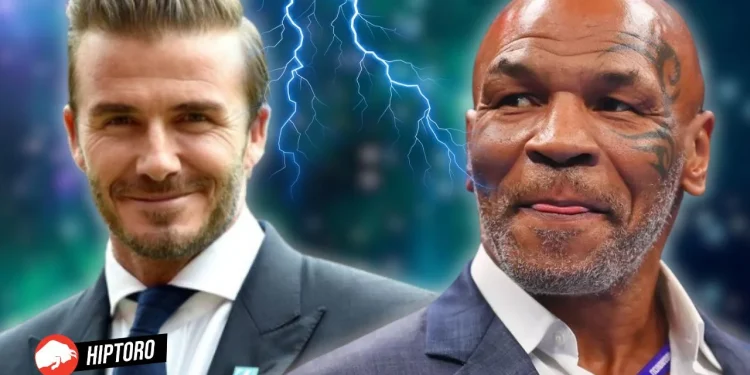Athlete cameos in films and TV shows often serve as delightful surprises for fans, bridging the gap between sports and entertainment. These appearances not only bring a touch of real-world excitement to fictional narratives but also allow athletes to showcase their personalities and acting chops outside their regular arena. From unexpected comedic moments to poignant roles that resonate with audiences, athlete cameos can be memorable and impactful. This article explores the top 10 athlete cameos in popular films and TV shows, detailing the context of their appearances, their impact on the narrative, and the reception from fans and critics alike.
Here are the Top 10 Athlete Cameos in Popular Films and TV Shows
1. Michael Jordan in Space Jam
Introduction and Context
In 1996, “Space Jam” blended the worlds of basketball and animated entertainment, creating a cultural phenomenon that continues to resonate with audiences today. At the center of this unique film was Michael Jordan, arguably the most celebrated basketball player of all time. Directed by Joe Pytka, “Space Jam” unfolds as a fantastical sports adventure where Jordan must help the beloved Looney Tunes characters win a basketball game against a group of intergalactic invaders, the Monstars, to earn their freedom.
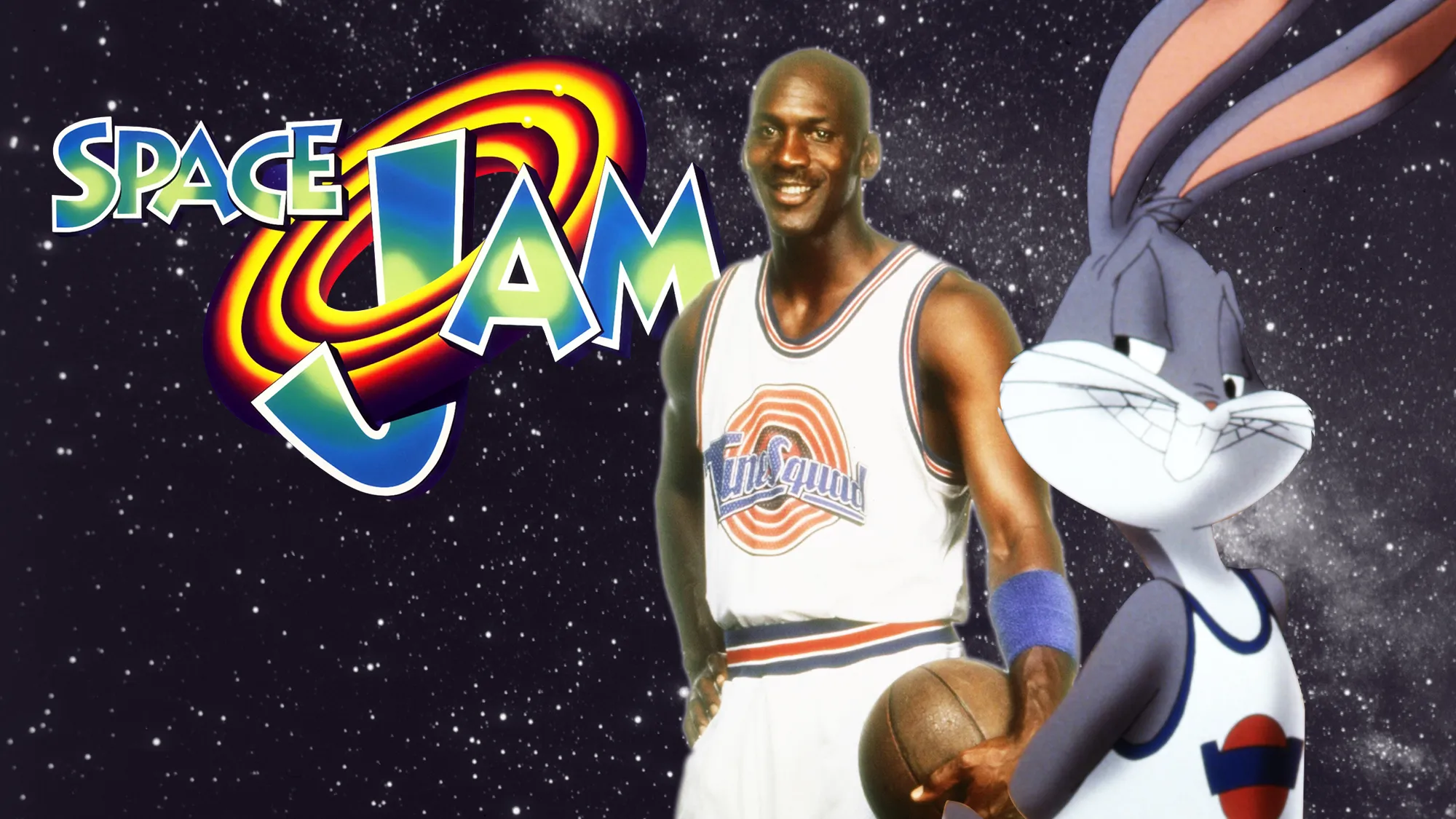
Role and Performance
Michael Jordan played himself, navigating both the challenges of basketball and the whimsical antics of his cartoon teammates. His role required him to act against green screens and interact with characters that would be added in post-production, a task that demanded a great deal of imagination and patience. Despite being an athlete with no formal acting training, Jordan’s performance was charismatic and surprisingly natural, providing a solid anchor for the film’s outlandish premise.
Impact on the Film and Beyond
“Space Jam” was more than just a film; it was a major marketing success that leveraged Jordan’s fame to unprecedented levels. The movie not only capitalized on his status as a sports icon but also cemented his place as a global cultural celebrity. It grossed over $230 million worldwide, becoming the highest-grossing basketball movie of all time. The film also featured an array of merchandise, ranging from toys and video games to apparel, further blending the lines between sports, entertainment, and commercial enterprise.
Critical and Fan Reception
While “Space Jam” received mixed reviews from critics, who often pointed out its thinly veiled commercial motives and a plot that served more as a vehicle for branding than storytelling, it was a hit with audiences, particularly children and basketball fans. Critics acknowledged Jordan’s effort in a challenging role, and fans appreciated the novelty and humor of seeing him alongside Bugs Bunny and other famous Looney Tunes characters. The film has since become a cult classic, appreciated for its nostalgic value and the joyous simplicity of its narrative.
Conclusion and Legacy
The legacy of “Space Jam” and Michael Jordan’s role in it extends far beyond the 90s. It inspired a sequel, “Space Jam: A New Legacy,” starring LeBron James, which was released in 2021. Jordan’s pioneering effort in this film paved the way for more athletes to explore roles in entertainment, demonstrating that the appeal of sports stars can transcend into different media. Ultimately, “Space Jam” remains a beloved memory in the hearts of many and a testament to Michael Jordan’s vast influence both on and off the court.
2. Mike Tyson in The Hangover
Introduction and Context
In 2009, “The Hangover” emerged as a defining comedy of its era, following a group of friends through a series of misadventures in Las Vegas after a bachelor party gone awry. Among the film’s most memorable and unexpected moments is the cameo by Mike Tyson, the former heavyweight boxing champion known for his formidable presence both in and out of the ring. Tyson’s appearance added an unexpected layer of humor and surrealism that perfectly complemented the film’s over-the-top narrative.
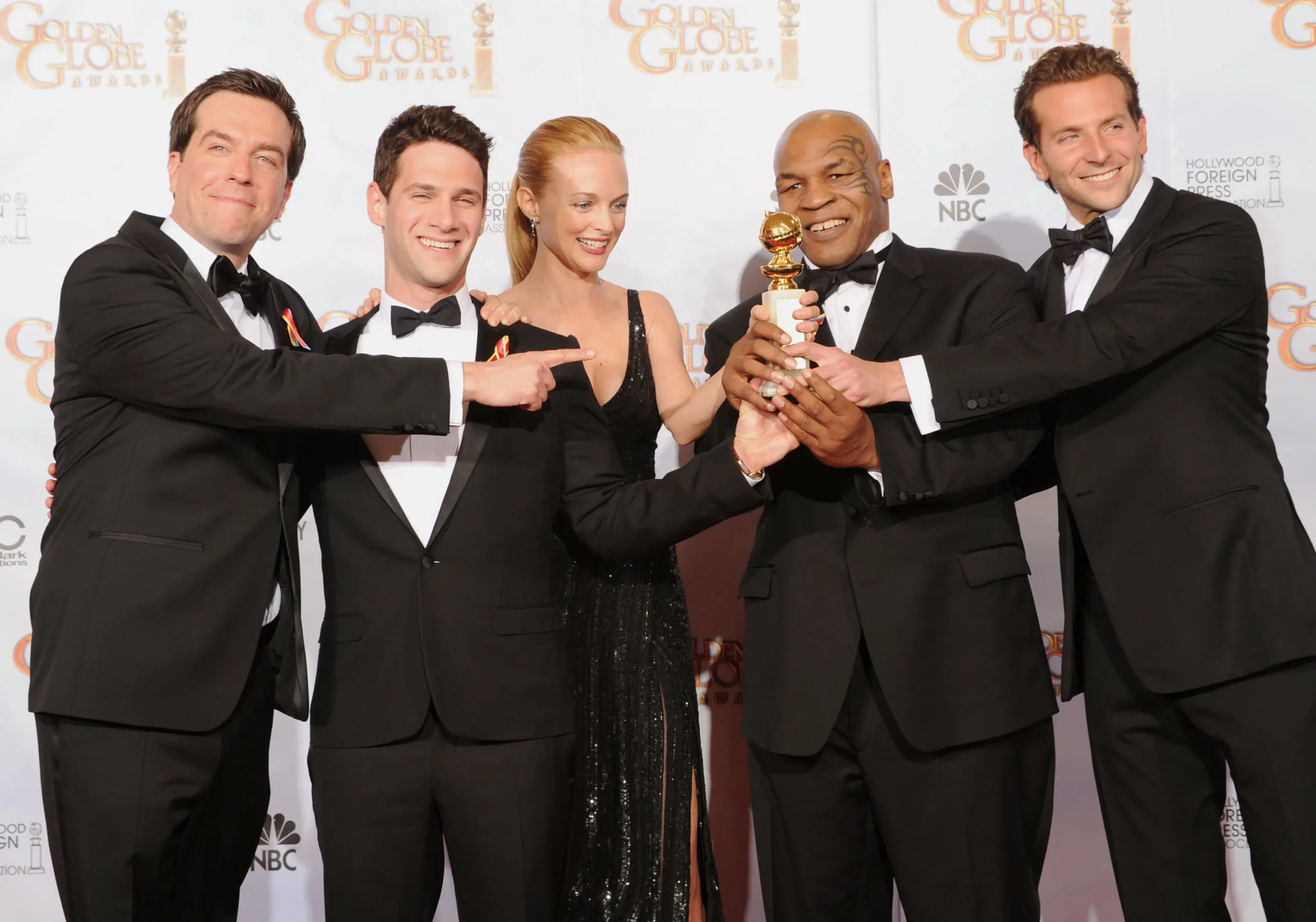
Role and Performance
Mike Tyson appears as himself in a standout scene where the main characters discover they have inadvertently stolen his tiger. Tyson’s entry is marked by him knocking out Alan, one of the protagonists, in a moment that mixes shock, comedy, and a touch of the absurd. Tyson’s role extends beyond a mere punch, as he later shows a surprisingly humorous side by drumming along to Phil Collins’ “In the Air Tonight” before sending the group on a mission to return his tiger.
Impact on the Film and Beyond
Tyson’s cameo was not just a comic relief; it was a pivotal plot device that escalated the stakes and absurdity of the situation, driving the narrative forward. His presence in the film also served to soften his public image, portraying him as someone who could laugh at himself and enjoy participating in a comedic scenario. This role helped reintroduce Tyson to the public in a new light, distancing him from his previous controversies and aligning him more with entertainment and pop culture.
Critical and Fan Reception
The reception to Mike Tyson’s role in “The Hangover” was overwhelmingly positive. Audiences and critics alike praised his willingness to poke fun at his tough-guy image and his surprisingly good comedic timing. The scene featuring Tyson became one of the movie’s most talked-about moments, enhancing its cultural footprint and contributing to its financial success—it grossed over $467 million worldwide. Tyson’s performance was frequently highlighted in reviews as a clever and hilarious inclusion.
Conclusion and Legacy
Mike Tyson’s cameo in “The Hangover” remains one of the most iconic athlete appearances in film history. It not only provided comic gold but also played a significant role in reshaping his image from a controversial sports figure to a more approachable, even endearing, celebrity. The success of this cameo led to Tyson being cast in similar roles and guest appearances in other films and TV shows, cementing his status as a versatile figure capable of crossing the boundaries between sports, scandal, and screen comedy.
His appearance underscored the potential for athletes to significantly impact popular culture beyond their sports achievements, contributing to the film’s legacy as a new standard for celebrity cameos in comedy.
3. Kareem Abdul-Jabbar in Airplane!
Introduction and Context
Released in 1980, “Airplane!” is a seminal work in the comedy genre, known for its slapstick humor, absurdity, and relentless puns. Among its many gags and surprise elements, Kareem Abdul-Jabbar’s cameo as co-pilot Roger Murdock stands out as one of the film’s comedic highlights. Abdul-Jabbar, a legendary basketball player, showcases his comedic talents in this role, playing both a critical part of the storyline and poking fun at his real-life persona.
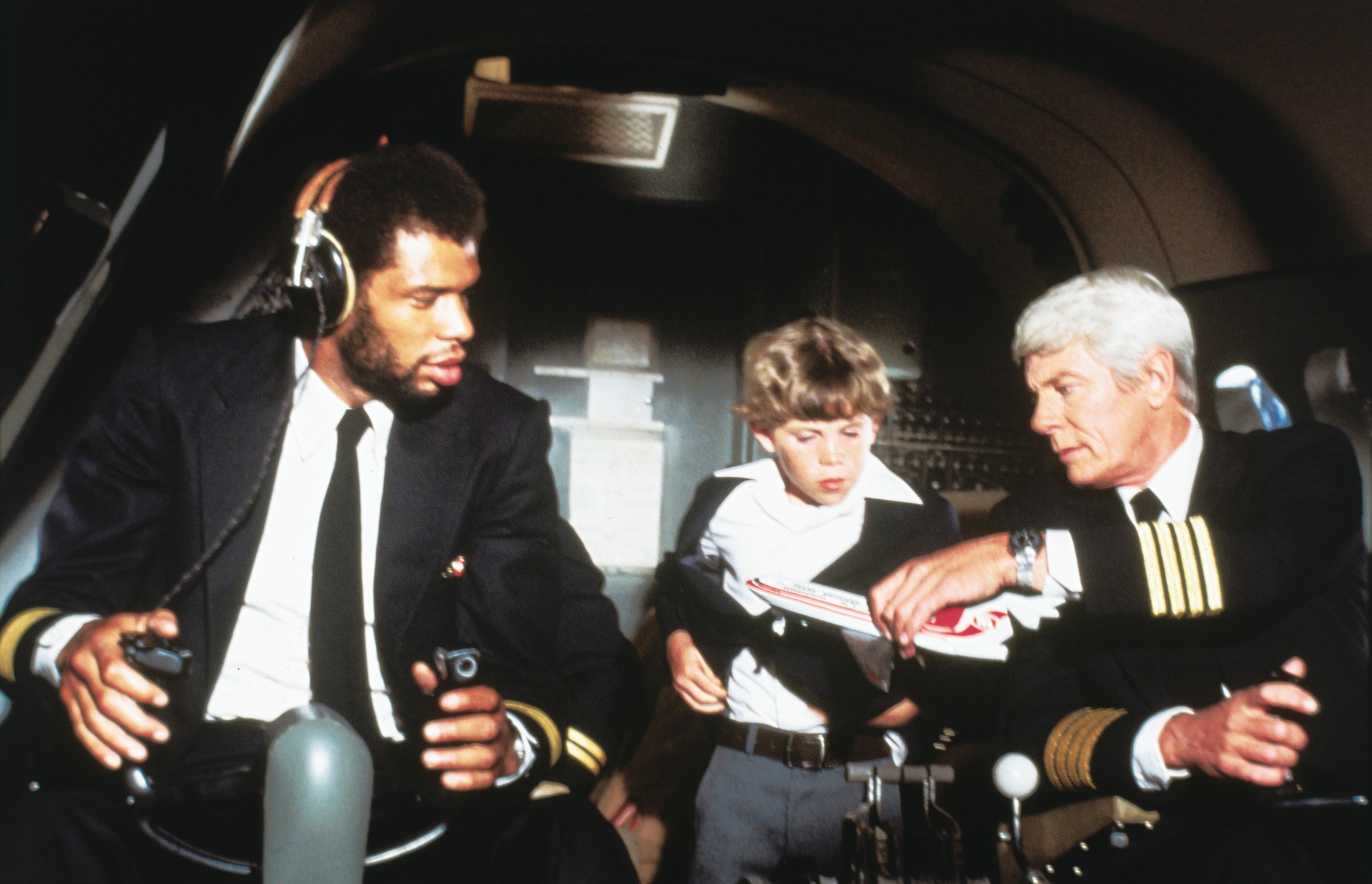
Role and Performance
In “Airplane!”, Abdul-Jabbar plays Roger Murdock, an airline co-pilot who initially pretends to be an airline professional rather than the basketball star. However, as the flight progresses and situations on the plane become increasingly ludicrous, he eventually breaks character in humorous exchanges with a young boy who recognizes him as the famous basketball player. This meta-fictional role allows Abdul-Jabbar to humorously confront the public perception of athletes as being singularly focused on their sports.
Impact on the Film and Beyond
Kareem Abdul-Jabbar’s performance in “Airplane!” is particularly memorable for how it blends his sports persona with his character, creating layers of humor that appeal to both basketball fans and general audiences. His role contributes to the film’s satirical take on disaster movies by inserting a familiar cultural figure into an unexpected context, enhancing the surreal and comedic quality of the film.
Critical and Fan Reception
The reception to Abdul-Jabbar’s cameo was overwhelmingly positive. Critics and audiences appreciated his willingness to satirize his stoic public image and engage in self-deprecating humor. His interactions in the film, especially with the young boy who insists he is the basketball star, are often cited as some of the funniest moments in a movie filled with comedic scenes. “Airplane!” was a critical and box office success, and Abdul-Jabbar’s role was a significant part of its charm and enduring popularity.
Conclusion and Legacy
Kareem Abdul-Jabbar’s appearance in “Airplane!” not only provided memorable comedic moments but also set a precedent for how athlete cameos could add depth and humor to a film. It demonstrated that athletes could successfully step into acting roles that cleverly utilized their sports fame, contributing to the film’s narrative and entertainment value. His performance is frequently referenced in discussions about successful athlete cameos in film history, underscoring the potential for sports figures to cross over into different media and genres effectively.
Kareem Abdul-Jabbar’s role in “Airplane!” remains a perfect example of how effective and impactful clever casting can be, particularly when it allows public figures to explore different facets of their personalities and connect with audiences in new ways.
4. Lance Armstrong in Dodgeball: A True Underdog Story
Introduction and Context
“Dodgeball: A True Underdog Story,” released in 2004, is a comedy film that revolves around a group of misfits entering a dodgeball tournament to save their local gym from a corporate takeover. This movie is filled with quirky humor and slapstick comedy, and one of its most significant moments is the unexpected cameo by Lance Armstrong, the famed cyclist known at the time for his seven consecutive Tour de France wins and his inspirational comeback from cancer.
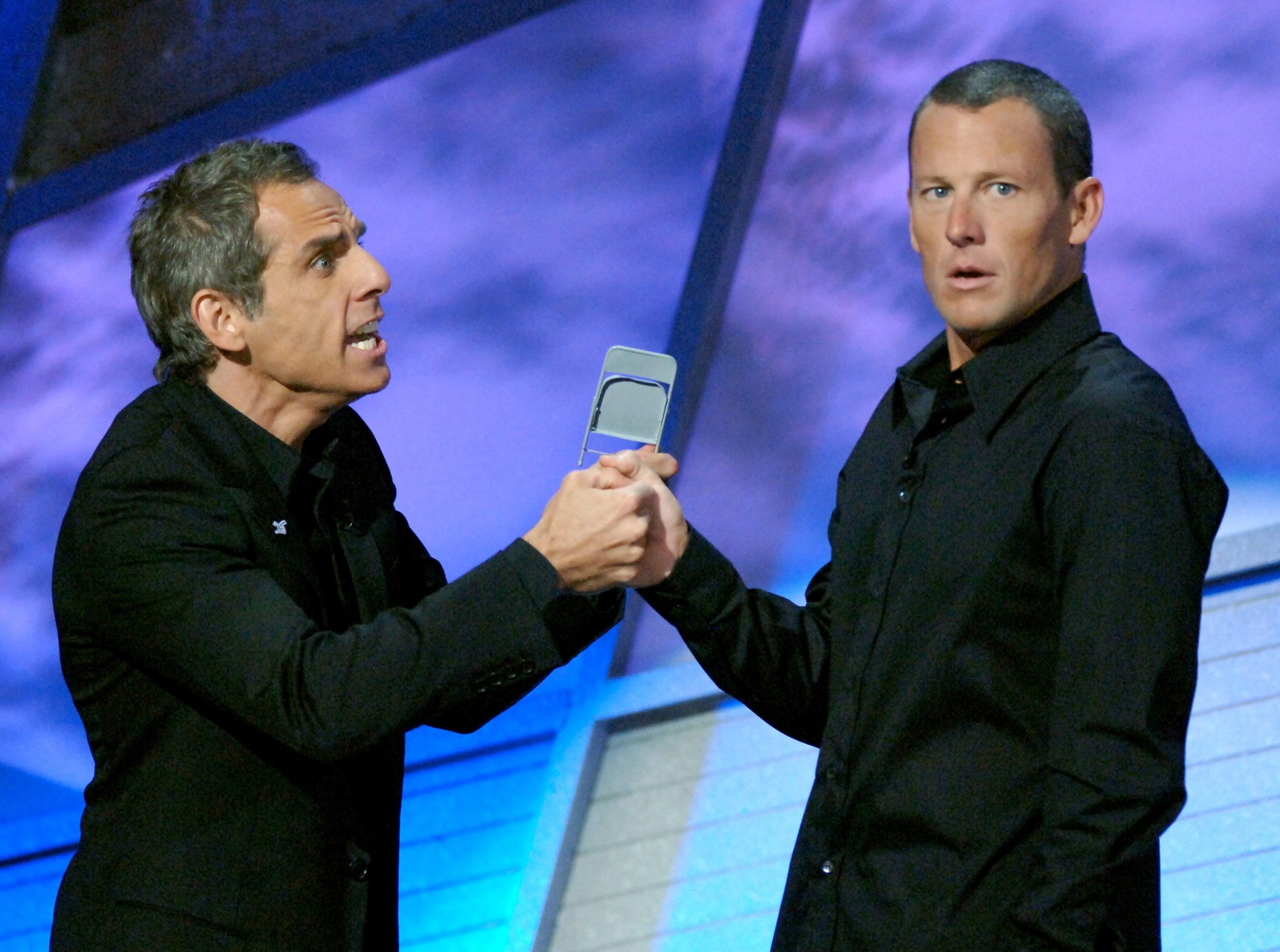
Role and Performance
Lance Armstrong appears in a pivotal scene where the protagonist, Peter La Fleur (played by Vince Vaughn), is about to give up on the dodgeball tournament. Armstrong introduces himself and shares his own story of overcoming adversity to win the Tour de France multiple times despite battling cancer. His motivational speech plays a crucial role in inspiring La Fleur to return to the tournament and face his challenges head-on. Armstrong’s delivery is earnest and straightforward, fitting well within the film’s comedic yet inspiring narrative.
Impact on the Film and Beyond
Armstrong’s cameo was not just a humorous addition but served as a crucial turning point in the plot, providing the necessary motivation for the protagonist to continue fighting against the odds. At the time of the film’s release, Armstrong was widely regarded as a symbol of perseverance and strength, making his appearance particularly impactful. His presence in the film helped to emphasize themes of resilience and determination, resonating with viewers who admired his real-life achievements.
Critical and Fan Reception
The reception to Armstrong’s cameo was very positive at the time of the film’s release. Audiences found the scene both amusing and uplifting, effectively leveraging Armstrong’s public image to enhance the film’s underdog story. Critics also praised the cameo for its clever use of a real-life sports figure to underscore the film’s themes of overcoming adversity. However, the perception of this cameo has evolved following Armstrong’s doping revelations, which led to a reevaluation of his career and public persona.
Conclusion and Legacy
Lance Armstrong’s role in “Dodgeball” serves as an interesting case study in how an athlete’s public image can influence their impact in entertainment media. At the time, his cameo was seen as a highlight of the film, adding depth and a touch of reality to its message. However, in light of subsequent events in Armstrong’s life, the cameo has taken on new layers of irony and complexity.
Despite these complexities, Armstrong’s appearance in “Dodgeball” remains memorable for its initial intention and context, reflecting how athletes can effectively contribute to film narratives by drawing on their personal stories of triumph. The cameo continues to be a talking point for discussions about celebrity appearances in films and the interplay between an athlete’s real-life narrative and their on-screen portrayals.
5. David Beckham in The Man from U.N.C.L.E.
Introduction and Context
Guy Ritchie’s stylish 2015 spy film, “The Man from U.N.C.L.E.,” is known for its sharp aesthetics, witty dialogue, and a 1960s Cold War setting. Among its various highlights is a brief but memorable cameo by David Beckham, one of the most famous footballers globally. Beckham’s appearance in a Ritchie film isn’t too surprising given their friendship and Ritchie’s penchant for including intriguing cameo roles in his movies.
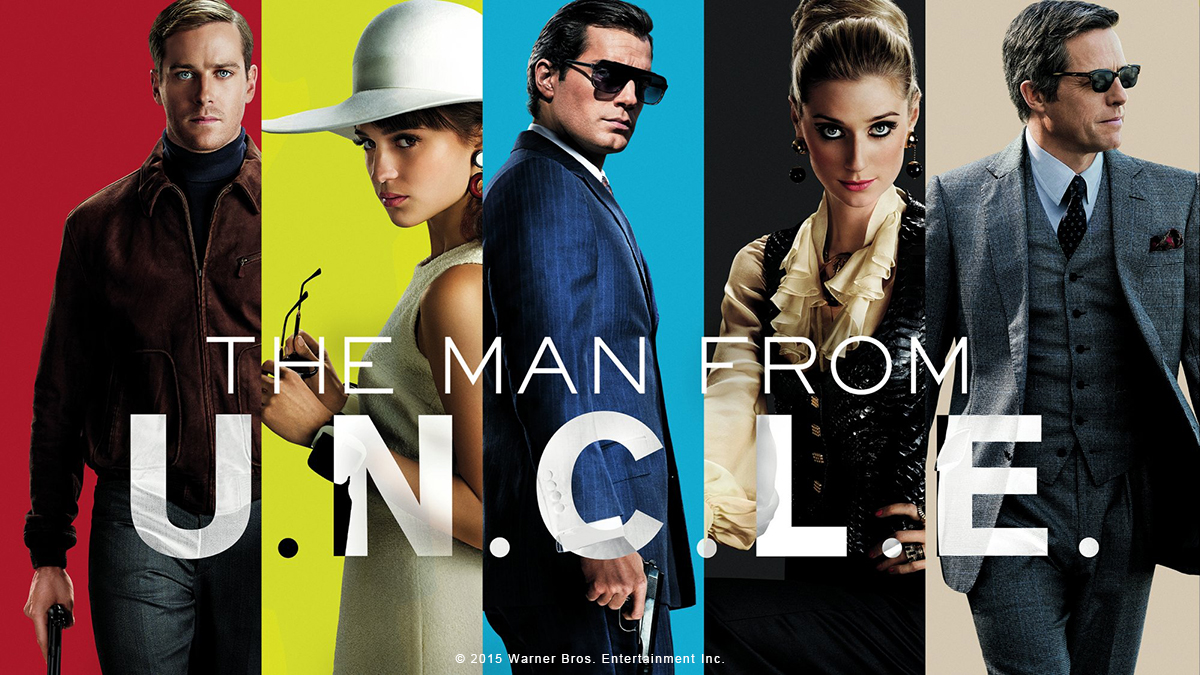
Role and Performance
In the film, David Beckham appears in a small but memorable role during a scene set in a men’s restroom. Beckham plays a projectionist who helps in setting up a crucial film screening that the main characters, played by Henry Cavill and Armie Hammer, attend. His role, though limited in lines, showcases Beckham’s sharp, composed persona, aligning well with the film’s suave and polished tone. His presence adds a touch of glamour and unexpected charm, fitting seamlessly into the stylish world of espionage portrayed in the movie.
Impact on the Film and Beyond
While Beckham’s cameo is brief, it effectively adds star power and a moment of levity to the narrative. His appearance might be short, but it’s a strategic insertion by Ritchie to blend celebrity culture with the cinematic experience, enhancing the film’s appeal. Beckham’s global recognition and status as a style icon contribute to the film’s international allure and marketability, especially appealing to audiences who might appreciate the crossover between sports fame and cinematic fiction.
Critical and Fan Reception
David Beckham’s cameo in “The Man from U.N.C.L.E.” was well-received by audiences and critics alike. Though his screen time was minimal, his performance was praised for its subtlety and charm. Fans and reviewers noted the clever use of Beckham’s star appeal, which added an extra layer of interest to the film without overshadowing the main narrative. His role was seen as a tasteful nod to his persona rather than a mere gimmick, which is often a risk with celebrity cameos.
Conclusion and Legacy
David Beckham’s appearance in “The Man from U.N.C.L.E.” exemplifies how a well-executed cameo can contribute to the film’s texture without detracting from the main storyline. Beckham’s foray into acting, particularly in this cameo, shows his versatility and ability to engage with different forms of media, reinforcing his status not just as a sports icon but also as a cultural figure. The cameo remains a point of discussion for fans of the film and serves as an example of how athletes can successfully transition into film, even in limited roles.
This exploration into Beckham’s cameo highlights the effective use of his star quality in a cinematic context, further blurring the lines between sports, cinema, and celebrity culture.
6. Shaquille O’Neal in Scary Movie 4
Introduction and Context
“Scary Movie 4,” released in 2006, is part of the popular “Scary Movie” franchise known for its satirical takes on horror, science fiction, and thriller films. This installment parodies a range of movies including “War of the Worlds,” “The Grudge,” and notably “Saw.” Shaquille O’Neal’s cameo in this film plays directly into the parody of “Saw,” providing a humorous twist that leverages his larger-than-life persona and fame as one of the greatest basketball players.
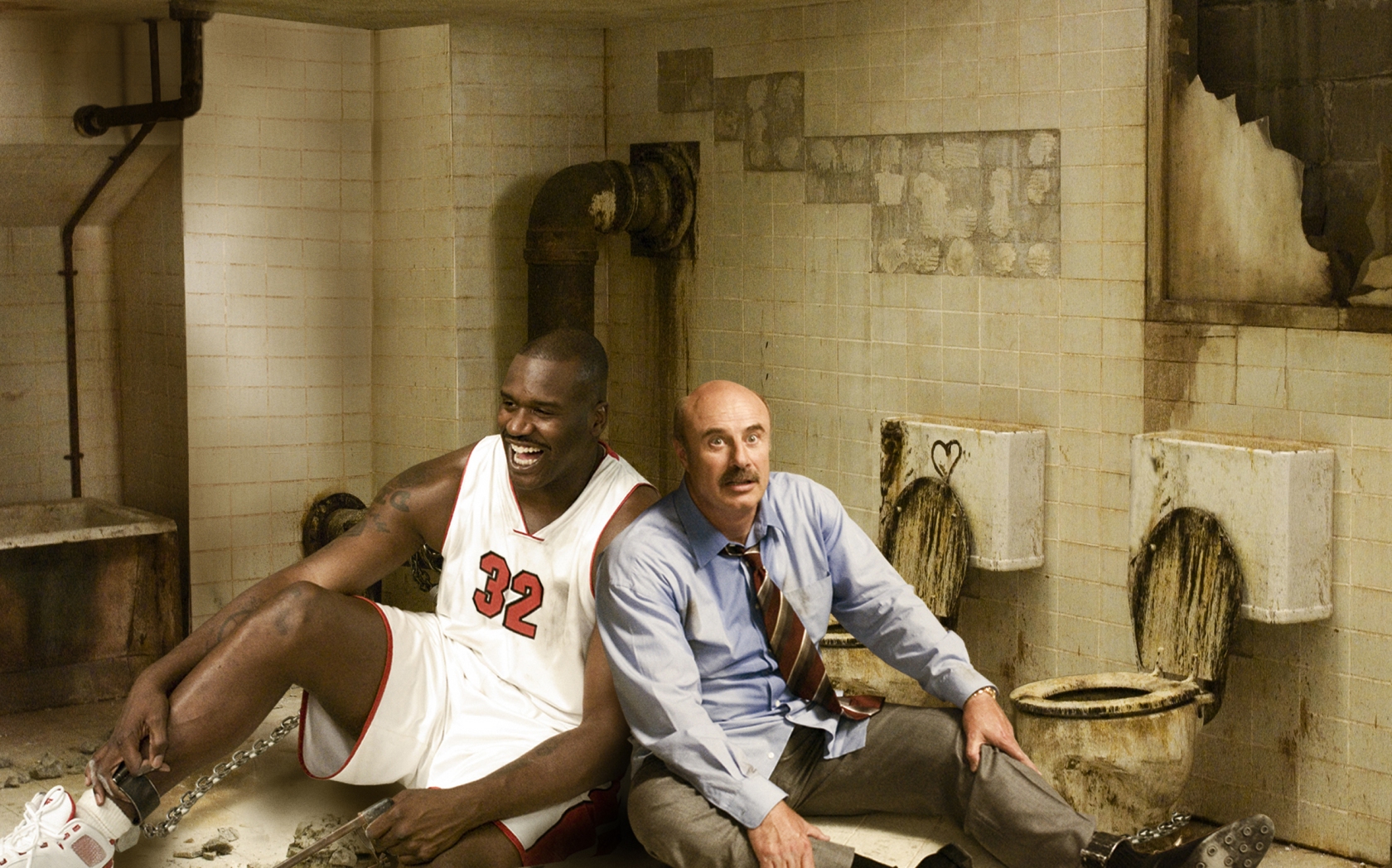
Role and Performance
In “Scary Movie 4,” Shaquille O’Neal appears alongside fellow actor Dr. Phil in the film’s opening sequence, which is a spoof of the “Saw” series. They find themselves trapped in a grimy bathroom, chained to pipes, mirroring the original “Saw” movie setup. O’Neal’s role involves a comedic performance where he has to solve a puzzle to escape, leading to several humorous mishaps including his attempts to shoot a free throw with a metal saw—poking fun at his notoriously poor free-throw shooting percentage in the NBA.
Impact on the Film and Beyond
Shaq’s cameo sets the tone for “Scary Movie 4,” highlighting its commitment to ridiculous, over-the-top humor that spares no expense at self-deprecation. By casting Shaq in a scenario so far removed from basketball, yet subtly referencing it, the film cleverly uses his sports identity to enhance the comedic element. This scene is pivotal not just for laughs but also for setting up the irreverent style that defines the rest of the movie.
Critical and Fan Reception
The reception to Shaq’s cameo was mixed, reflecting the overall divisive reception of the movie. While some fans appreciated the humor and Shaq’s willingness to laugh at himself, others found it too silly or underwhelming. However, Shaq’s performance was generally seen as a highlight in the film’s early moments, appreciated for its absurdity and how it played into the broader parody theme of the franchise.
Conclusion and Legacy
Shaquille O’Neal’s appearance in “Scary Movie 4” is emblematic of his career post-basketball, where he has embraced various entertainment roles, often with a comedic slant. His cameo in this film underscores his versatility and eagerness to engage with different facets of pop culture, from sports to cinema. It also highlights the effective use of athlete cameos in genre films, particularly comedies, where their real-world personas can be played with to great humorous effect.
Shaq’s role in “Scary Movie 4” might not be the most critically acclaimed, but it remains memorable for its boldness and how it taps into his cultural stature. This cameo is a clear example of how sports figures can transcend their athletic achievements and make notable contributions to entertainment, providing unique moments that resonate with both their fans and broader audiences.
7. Tony Hawk in The Simpsons
Introduction and Context
Tony Hawk’s cameo in “The Simpsons,” specifically in the episode titled “Barting Over,” is a standout moment that cleverly integrates the world-famous skateboarder into the long-running animated series. Aired in 2003 during the show’s fourteenth season, this episode focuses on Bart discovering a commercial he starred in as a baby and deciding to legally emancipate himself. Hawk plays a pivotal role in this storyline, bringing his skateboarding legacy into the Springfield universe.
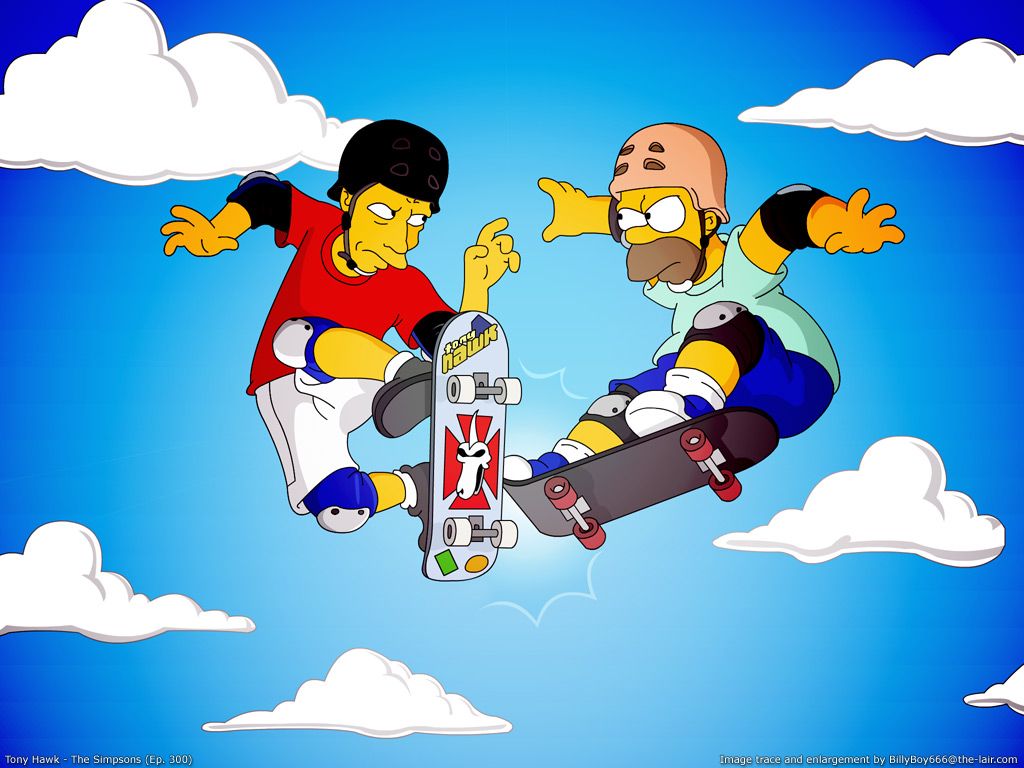
Role and Performance
In “Barting Over,” Tony Hawk appears as himself, living in the same apartment building as Bart, who has moved out of his family home. Hawk befriends Bart and introduces him to a lifestyle filled with skateboarding and cool parties. One of the key scenes involves a skateboarding duel between Hawk and Homer, who tries to win back Bart’s affection. Hawk’s character is portrayed as effortlessly cool and skilled on his skateboard, bringing an authentic vibe to his animated form. His voice acting feels natural, adding to the episode’s charm and humor.
Impact on the Film and Beyond
Hawk’s cameo was not just a simple guest appearance; it played a significant part in the episode’s narrative, enhancing its themes of independence and father-son relationships. His presence in the episode also highlights the show’s ability to stay culturally relevant by incorporating real-life sports icons into its storytelling. Hawk’s portrayal in “The Simpsons” helped bridge skateboarding culture with mainstream media, showcasing it within a widely beloved context.
Critical and Fan Reception
The episode received positive feedback from both viewers and critics. Fans of “The Simpsons” appreciated the show’s continued knack for blending celebrity cameos seamlessly into its episodes, while skateboarding enthusiasts were thrilled to see Tony Hawk represented in such an iconic series. His appearance is often cited as one of the more memorable celebrity cameos in the show’s history, noted for its humor and how well Hawk’s laid-back personality translated into the animated format.
Conclusion and Legacy
Tony Hawk’s cameo in “The Simpsons” exemplifies how athlete guest appearances can effectively enhance television storytelling, providing not only entertainment value but also cultural commentary. This episode remains a notable part of “The Simpsons'” legacy, illustrating its ongoing relevance and ability to engage with figures from diverse backgrounds, including sports. Hawk’s participation in the episode also demonstrates his broader appeal and ability to resonate with audiences beyond the skateboarding community.
His appearance is a testament to the power of blending pop culture with sports, offering a unique perspective that enriches the viewer’s experience. This cameo continues to be celebrated as a clever integration of a sports icon into a beloved television show, highlighting the successful intersection of different entertainment forms.
8. Derek Jeter in The Other Guys
Introduction and Context
“The Other Guys,” a 2010 action-comedy film directed by Adam McKay, stars Will Ferrell and Mark Wahlberg as two mismatched New York City detectives who bumble their way into a major case. Amidst the film’s comedic escapades and satirical takes on buddy cop films, Derek Jeter’s cameo stands out for its humor and relevance. Jeter, a renowned Major League Baseball player and a central figure of the New York Yankees, plays a pivotal role in a key plot point early in the movie.
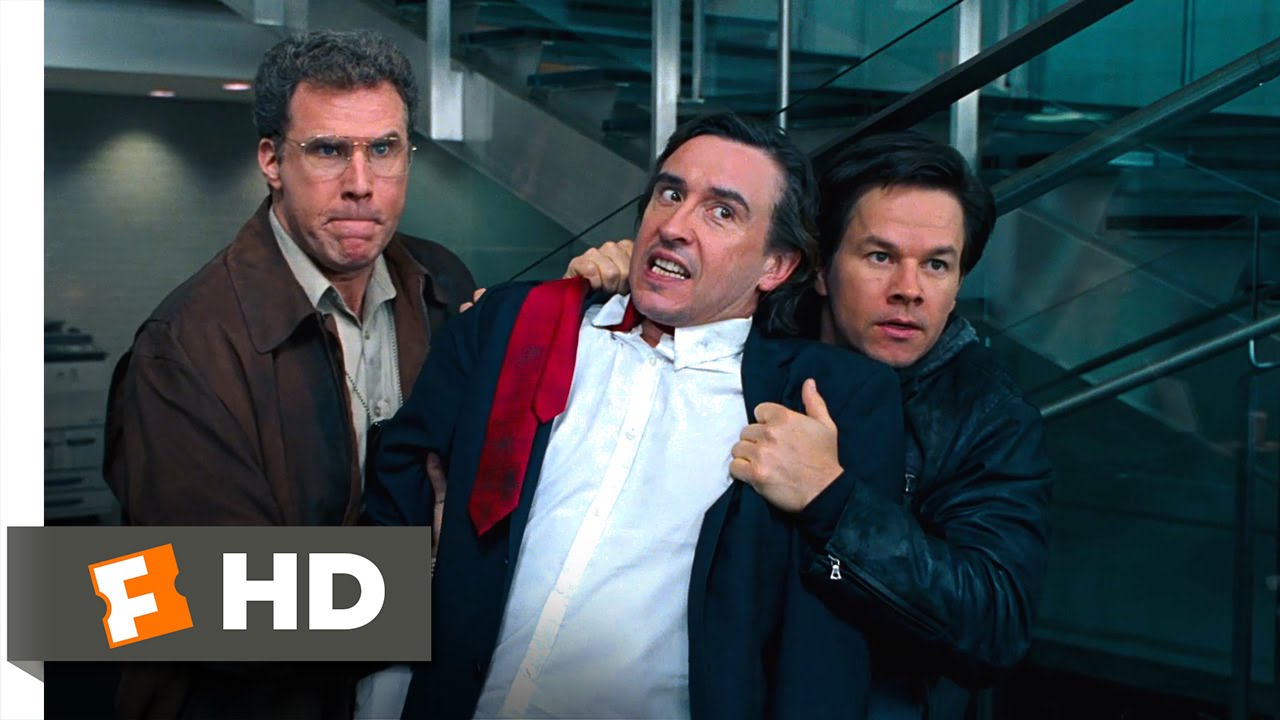
Role and Performance
Derek Jeter appears as himself in a crucial and humorous scene where Detective Terry Hoitz (played by Mark Wahlberg) accidentally shoots him during a public event, mistaking him for a criminal. This incident earns Hoitz the derisive nickname “The Yankee Clipper,” and it becomes a running joke throughout the film. Jeter’s cameo is brief but impactful, showcasing his willingness to poke fun at himself and engage in the film’s playful critique of hero worship and celebrity in the context of sports.
Impact on the Film and Beyond
Jeter’s cameo not only provides a memorable moment but also sets the tone for the film’s comedic and irreverent approach to law enforcement and celebrity. By involving a well-known sports figure, the film taps into a broader cultural commentary about the intersection of sports, media, and law enforcement perception. His appearance adds a layer of authenticity and New York flavor to the movie, enhancing its appeal to both baseball fans and general audiences.
Critical and Fan Reception
The reaction to Derek Jeter’s cameo was overwhelmingly positive, with fans and critics alike appreciating the humor and self-deprecation involved. His scene is often highlighted as one of the standout moments in “The Other Guys,” contributing to its overall success. The film performed well at the box office and received favorable reviews, and Jeter’s willingness to participate in a joke at his expense was noted as a highlight.
Conclusion and Legacy
Derek Jeter’s brief role in “The Other Guys” exemplifies how effective a well-placed cameo can be in adding depth and humor to a film. It demonstrates his cultural significance and the good-natured spirit needed to participate in such a role. This cameo remains a memorable moment in his post-baseball career, showcasing his ability to connect with a wider audience beyond the baseball diamond.
His appearance in the film not only reinforces his status as a beloved sports figure but also as a cultural icon willing to engage with popular media in unexpected ways. Jeter’s cameo continues to be celebrated for its clever integration into the movie and its comedic impact, serving as a testament to the seamless blending of sports and entertainment.
9. Brett Favre in There’s Something About Mary
Introduction and Context
“There’s Something About Mary” is a 1998 romantic comedy directed by the Farrelly brothers that became a cultural sensation for its blend of humor and heartfelt moments. The film follows Ted (played by Ben Stiller) as he tries to reconnect with his high school crush, Mary (played by Cameron Diaz). A key twist in the story involves Brett Favre, the renowned NFL quarterback, who appears as one of Mary’s suitors. Favre’s cameo is pivotal to the film’s climax and adds an unexpected sports celebrity twist to the plot.
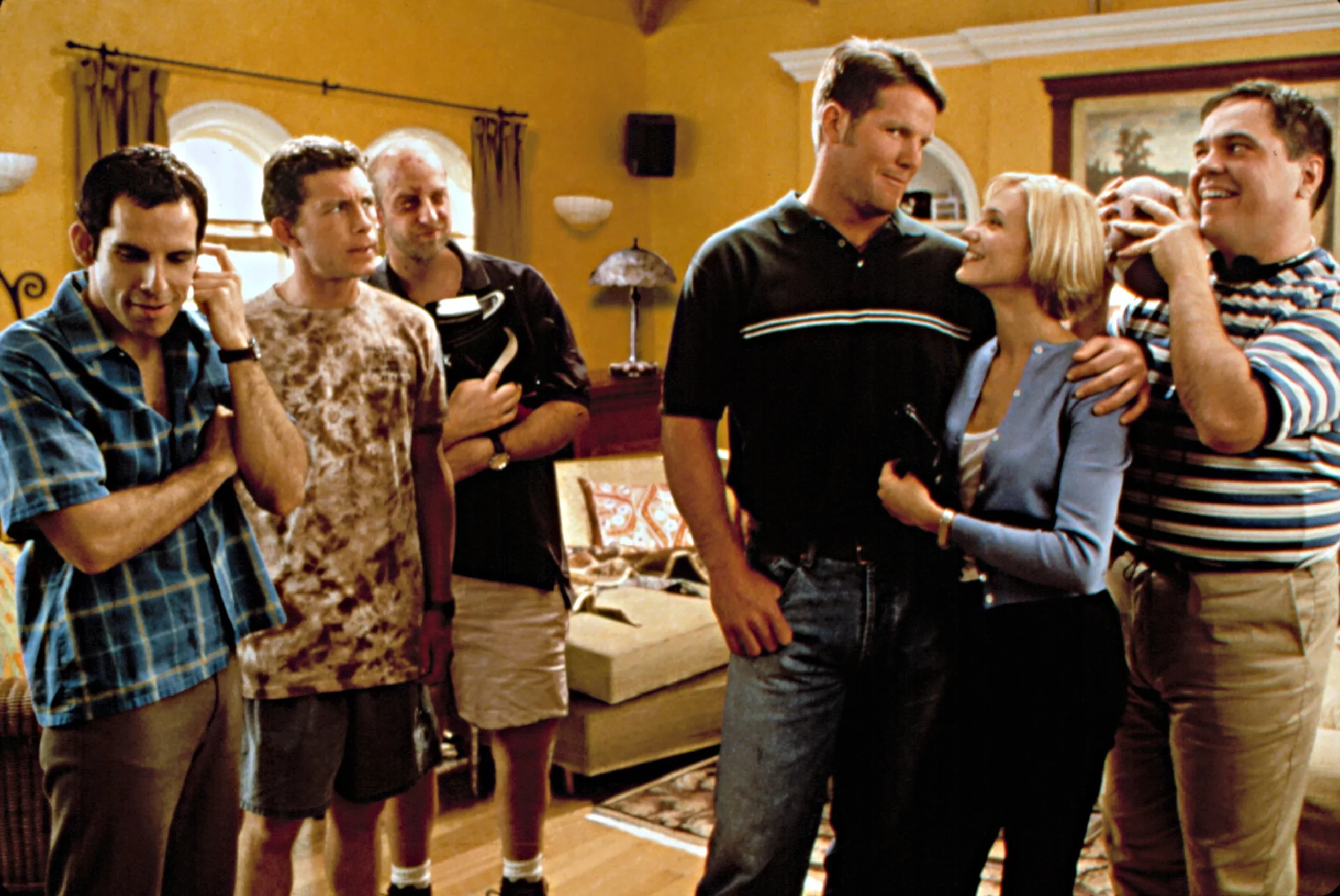
Role and Performance
In the film, Brett Favre plays himself, revealed to be Mary’s former boyfriend whom she still holds in high regard. His appearance comes as a surprise to both the characters and the audience, serving as a crucial plot point that complicates the romantic pursuits of the other characters. Favre’s role is not just a brief appearance; he is central to the storyline’s resolution. His performance is straightforward and sincere, fitting well with the film’s comedic yet genuine tone.
Impact on the Film and Beyond
Brett Favre’s cameo was a significant addition to “There’s Something About Mary,” providing a humorous and memorable element that contributed to the movie’s overall success. His presence in the film leveraged his popularity as an NFL star to attract a broader audience, thereby enhancing the film’s box office appeal. Additionally, Favre’s role played with the idea of celebrity and normalcy, adding depth to the film’s commentary on idolization and love.
Critical and Fan Reception
The reception to Brett Favre’s appearance was generally positive, with audiences enjoying the humor and novelty of his cameo. Critics and viewers praised the film for its clever script and effective use of a sports figure in a non-traditional role. “There’s Something About Mary” was a box office hit, and Favre’s cameo is often remembered as one of the film’s standout moments, discussed for its surprise factor and its seamless integration into the storyline.
Conclusion and Legacy
Brett Favre’s cameo in “There’s Something About Mary” showcases how effectively an athlete can contribute to a film’s narrative and entertainment value beyond mere spectacle. His appearance helped blur the lines between sports fame and movie storytelling, offering a unique twist that resonated with viewers. The film remains a favorite in the romantic comedy genre, and Favre’s role is a prime example of how the inclusion of a sports figure can enhance a film’s appeal and leave a lasting impression on the audience.
His role in the film not only cemented its status as a memorable comedy but also demonstrated how athletes can meaningfully engage with the entertainment industry, contributing significantly to a film’s cultural impact and success.
10. LeBron James in Trainwreck
Introduction and Context
“Trainwreck,” directed by Judd Apatow and released in 2015, stars Amy Schumer as a woman navigating her way through personal and professional chaos. LeBron James plays a significant role in the film, not just a cameo but as a key supporting character, which allows him more screen time and development than typical athlete appearances. His role as Aaron’s (played by Bill Hader) best friend provides not only comedic relief but also a unique perspective on relationships and loyalty.
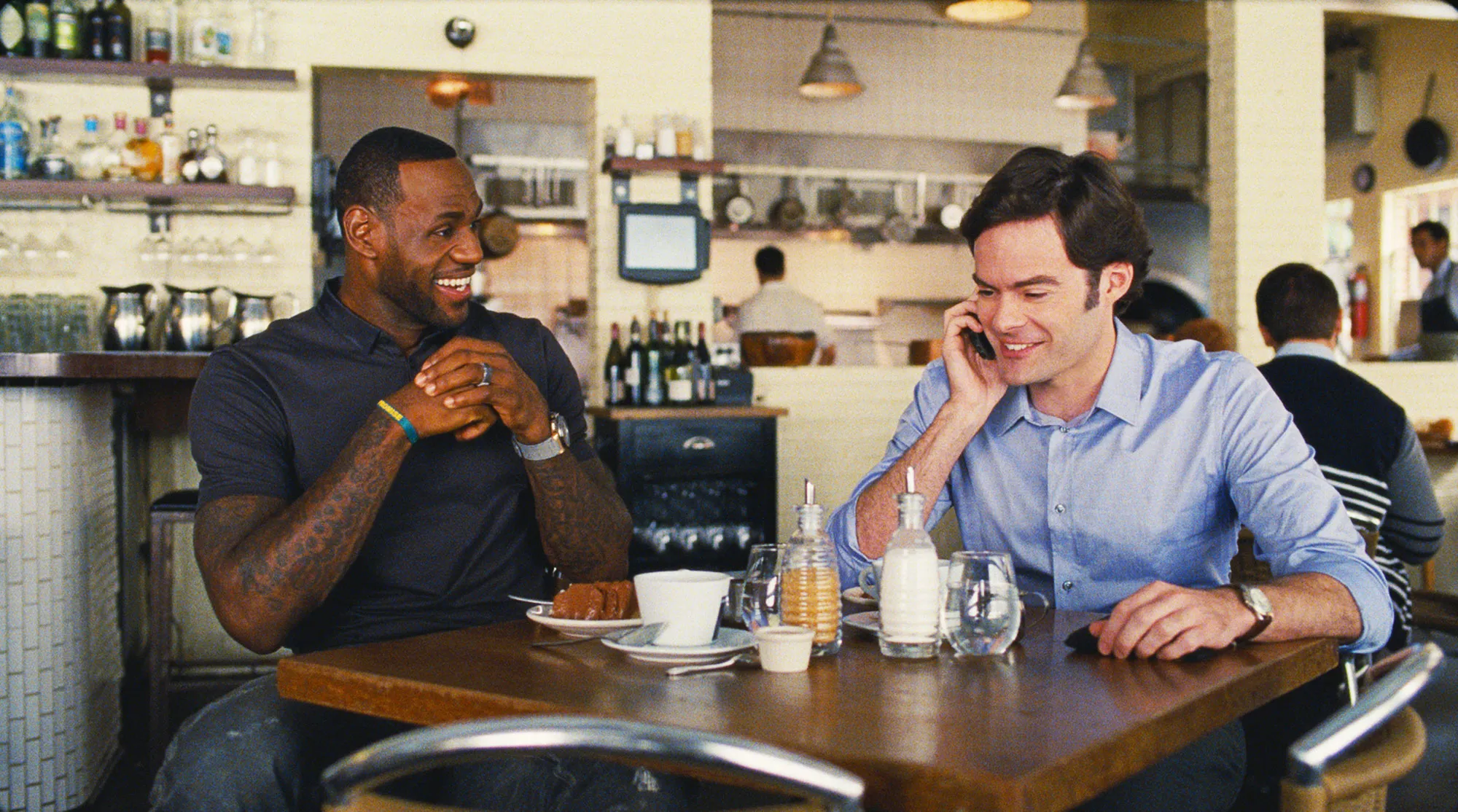
Role and Performance
LeBron James portrays a fictionalized version of himself, acting as both a friend and mentor to Aaron, a sports doctor. In this role, LeBron is overly frugal, surprisingly sensitive, and highly protective of Aaron, offering relationship advice and genuinely caring about his well-being. This version of LeBron is a stark contrast to his public persona as a dominant basketball superstar, which plays well for comedic effect. His performance is nuanced and shows his capabilities as an actor, not just an athlete making a brief appearance.
Impact on the Film and Beyond
LeBron’s involvement in “Trainwreck” was widely praised for adding depth and humor to the film. His performance exceeded many viewers’ expectations for an athlete-turned-actor, demonstrating his versatility and charisma. By showing a different side of his personality, LeBron helped bridge the gap between sports fans and moviegoers, broadening the film’s appeal. His role in the movie also highlighted his potential for future roles in the entertainment industry, setting the stage for more substantial acting opportunities.
Critical and Fan Reception
Critics and audiences responded positively to LeBron James’s performance, with many noting his comedic timing and natural screen presence. His ability to hold his own alongside seasoned actors like Schumer and Hader was particularly noted. LeBron’s role was seen as a standout in a film full of strong performances, with many reviewers expressing surprise at his adeptness in a comedic role. His participation in the film was not only a talking point but also a significant factor in its commercial success.
Conclusion and Legacy
LeBron James’s role in “Trainwreck” demonstrates the potential for athletes to transition into acting roles that require more than just a token appearance. By playing a character that leverages his real-life persona while also revealing a fictionalized vulnerability and humor, LeBron offered a fresh take on the concept of athlete cameos. His success in the film has encouraged other athletes to consider similar opportunities, expanding the ways in which they engage with popular culture outside of their sports careers.
The positive reception and impact of his performance continue to influence perceptions of athletes in film, suggesting that with the right role, athletes can successfully make the jump to significant acting roles, enriching their careers and the entertainment landscape.


